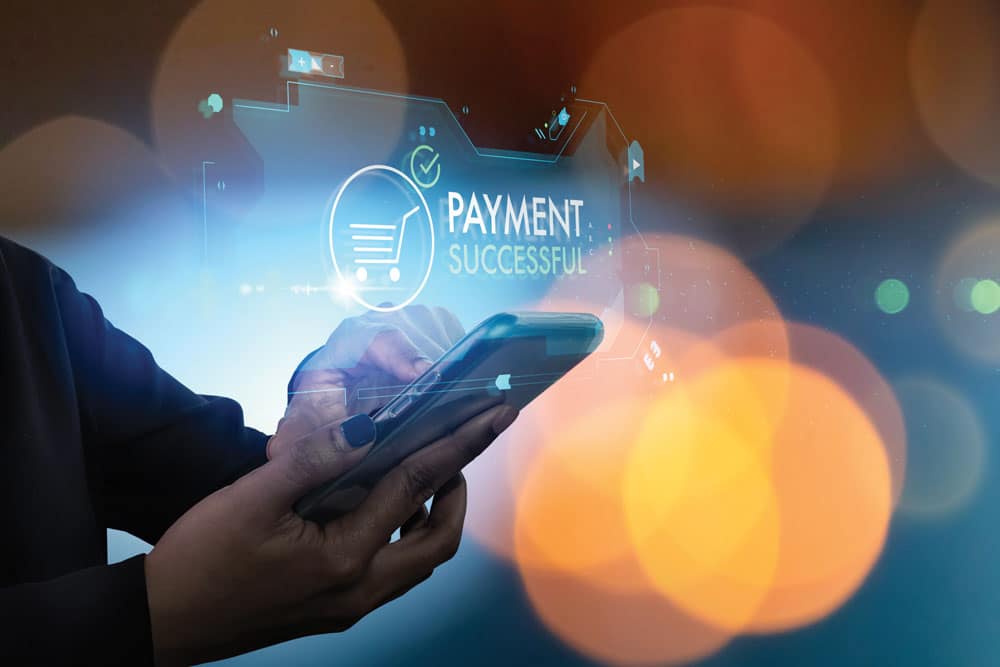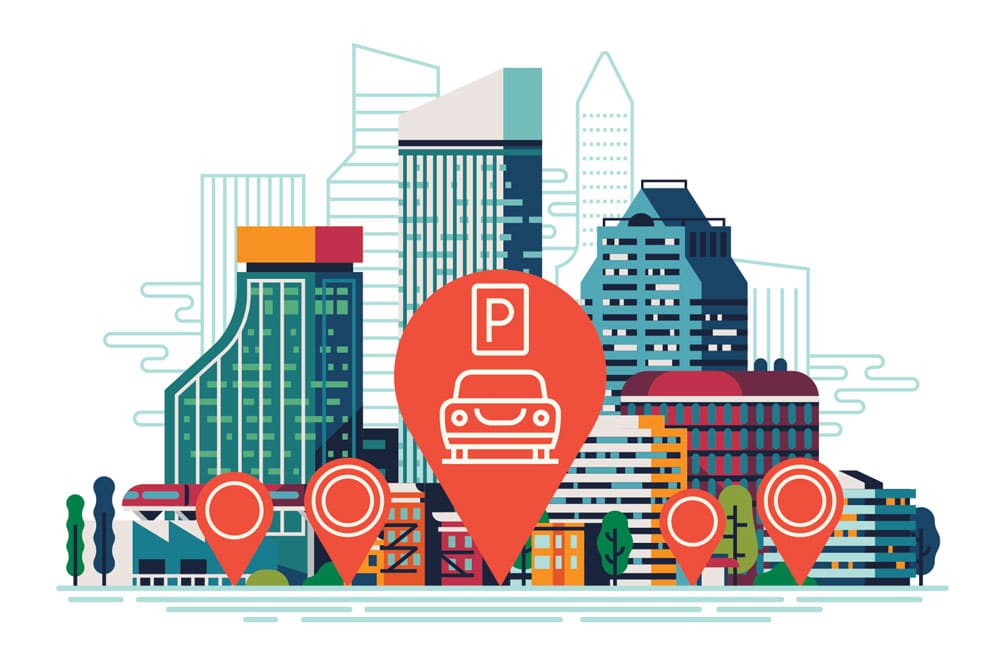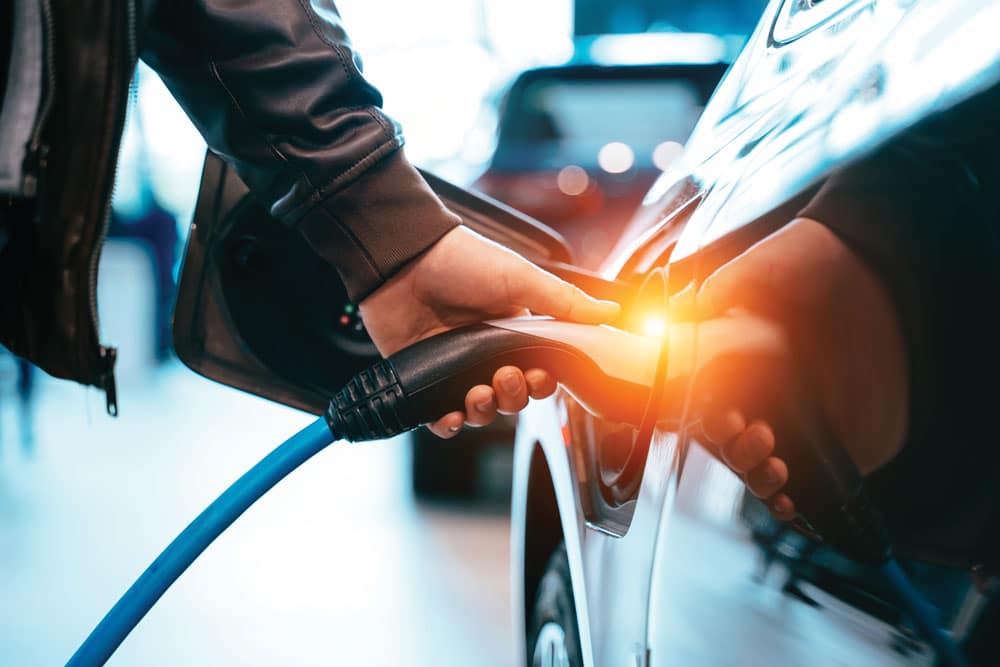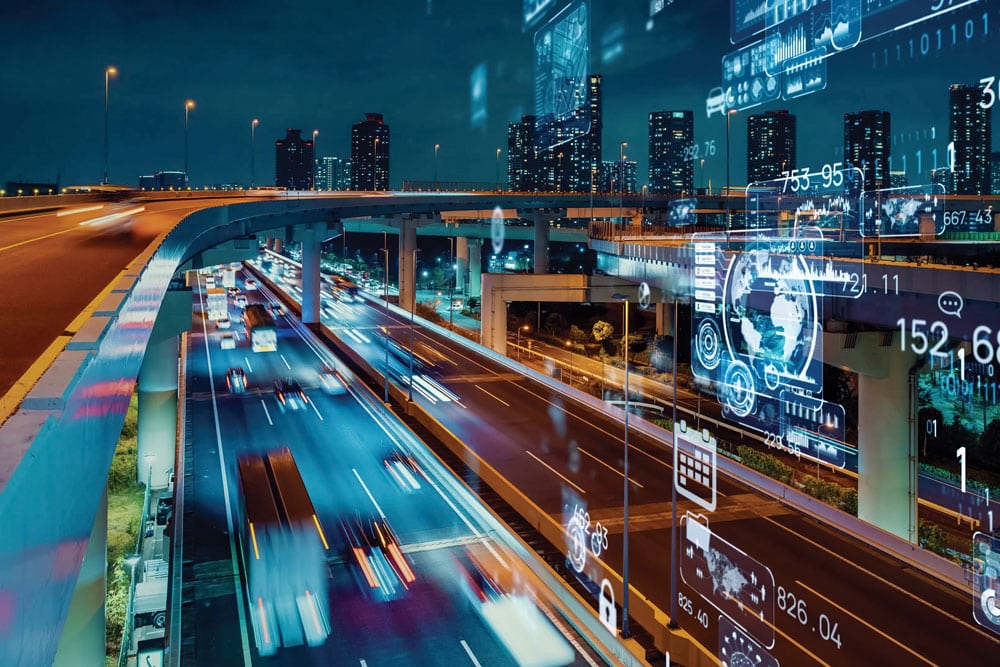Nearly $330 billion has been invested in over 2,000 companies focused on autonomous, connected, electric, and shared mobility since 2010.
Over $80 billion has been invested since the beginning of 2019 alone. In the next five to ten years, automakers have committed to going fully electric, fully digital, and fully connected—and there is no turning back.
Our industry is at the epicenter of dramatic shifts in mobility, but today’s mobility infrastructure is broken. Parking assets are predominantly single purpose, disconnected, opaque, and ultimately unable to serve the needs of today’s smart cities.
The opportunity is collectively ours for the taking. We can seize the future today. Not “flying cars” future, but the future of seamless, connected mobility.
Key trends to act on today:
Digital Payments

Through the pandemic—we saw a surge in the use of mobile phones for everything: ordering food, looking at menus, buying groceries—and yes—paying for things. 82% of Americans now use digital payments in their daily lives. By the time we get to 2024, digital wallets will comprise more than half of all e-commerce payments worldwide.
Parking is no different. Every driver will expect to be able to conveniently pay for parking with their phones and to manage their parking sessions easily and quickly.
Integrated Experiences
Whether it’s online food ordering, same day delivery for groceries or one-day delivery for products, consumers have come to expect that everything is one tap away—and that is becoming true in their cars.

It’s not enough to provide parkers with convenience when they arrive at your facility—you need to help them find you before they leave on their trip or while they are driving. When consumers do leave their house, they want it to be easy. Whether they are buying show tickets, making dinner reservations, or booking flights or hotels—consumers have shown that they want to plan in advance and save time.
Parking needs to meet them where they are and allow them to find and pay for parking while they are buying those tickets or making those reservations.
Connected Car
Consumers are demanding that convenience at the next level—inside their vehicles and integrated into their mobility apps.
Over the next ten years, 305 million connected cars will be on U.S. roads. In 2021, there were already 84 million. Every car—whether connected natively or through integrations like Apple Car Play or Android Auto—will become the interface for drivers to not only navigate from A to B, but to find and pay for parking, find and pay for charging and fuel, and do it all while at 60 miles per hour down the highway.
Parking lots will need to become digital to meet this need, providing real time inventory, pricing and transactability to those connected systems. Automakers and navigation apps will guide drivers to those lots that support this real time connectivity. In two to three years, accidental parking will disappear with most parkers making their decision on where to park when they start their car.
Evolution Of The Daily Commute
The pandemic changed everything as workers across the globe figured out how to be productive anywhere, and companies expect to continue to offer flexibility to their employees for years to come. According to the Partnership for New York City, most U.S. employers expect weekday attendance in their offices to exceed 50% this year.

Unfortunately, they expect that to be the ‘normal’ with 84% of white-collar employees expecting to work from home two or more days per week indefinitely.
The near term effects of this: monthly contract parkers are down despite occupancy essentially at pre-COVID levels, and there are shorter stays in lots driven by people arriving later in the day and leaving earlier. These parkers are literally deciding whether or not to go downtown on a daily basis, and they’re making that judgment based on the cost and the effort of the commute.
Our industry will need to meet these parkers where they are and offer them flexible products that allow them to get the benefits of loyalty and convenience at your facility and offer options to come and go when they want.
You will also need to find new ways to reach them. Every transportation, retail, and hospitality company will be competing to entice that consumer out into the world, while media and e-commerce companies are competing to provide the comfort and convenience of just staying home. And they will both be doing it with highly targeted digital media and seamless mobility experiences.
To meet that challenge, you will need to do more than just put your inventory online. You need two-way communication with parkers and to be constantly engaging across channels with both sides of the market to unlock the maximum value of every space, every kilowatt hour of EV charging, and every labor hour that you invest.
Electric Vehicles and the Charging Demand
Between 2020 and 2021, there was 121% increase in EV vehicle purchases. At this rate, which is only accelerating each year, millions of EV and hybrid electric vehicles will soon be on the road.
Ford recently announced a completely different division to accelerate EV development. General Motors has fully committed to EV in the next ten years. Hyundai is completely shutting down its internal combustion vehicle development in favor of EV. Over 200 new EV models will hit the global market in the next few years alone.
The automakers have burned the boats and are not going back. We must join them in this journey.
While many people will charge at home or at fast charging stations near the highway, millions more will need to charge in the city center, when they are at work, staying at hotels, going to events, or hanging out in their downtown apartments.

The time is now to create ample, quality access to chargers in both public and private parking spaces. That investment starts with you: evaluating the potential of your asset for this new revenue stream, identifying what makes charging high quality and profitable, and getting into the market for chargers before the big wave.
You will also have opportunities to put your team to work in new ways and deliver premium experiences—and revenue—as you help consumers charge in valet and hospitality situations.
And finally, fleets offer the biggest opportunity to transform urban parking. As rideshare and other types of fleets electrify, they are telling us they need reliable parking and EV charging in the city center, and they are willing to pay for it. Your assets—and your teams—are perfectly positioned to deliver for them and the incremental profits that will come.
A lot has changed in the last two years and continues accelerating daily. This is not the same parking market we were in a few years ago and disconnected, friction filled parking cannot work in this new world.
Your customers are looking for
more each time they park.The demands are high,
the stakes are high.The tech exists today.
Parking hasn’t always been
a bleeding edge industry,
but together we are
writing the future.Becoming dynamic
mobility hubs.Accelerating the potential
—Dan Roarty
of smart cities.
Featured Image: shutterstock / metamorworks
stock.adobe.com / green butterfly, Mascha Tace, carlos gardel, teksomolika




